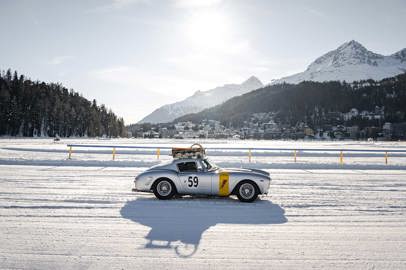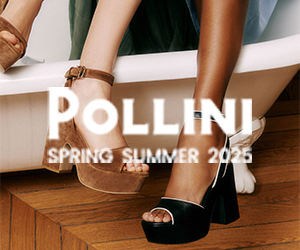15 September 2019
Mercedes-Benz. How designers showcase the luxury of the future
Interview with Gorden Wagener and the Vision EQS, a milestone on the way to the future of Mercedes-Benz
The concept of luxury is undergoing a transformation. Immaterial luxury is becoming ever more important. It is in the brand DNA of Mercedes-Benz to keep redefining luxury. The brand is currently transforming itself from a premium manufacturer to the leading and best-loved design brand in the world. Luxury is a driver of investments and innovations. In this way, luxury creates lasting values. Mercedes-Benz is one of the few brands that time and again succeeds in combining all dimensions of luxury in a synthesis. With its products, Mercedes-Benz creates a new experience of luxury where maximum emotional appeal, simplest operation, best workmanship, love of detail, and sustainability converge. The designers at Mercedes-Benz cooperate in a holistic approach across all International Design Centres. The boundaries between the design disciplines are vanishing. Designers live in the future - and create the luxury of the future with tools of tomorrow. For example, VR technology is significantly simplifying and accelerating the design process. The Mercedes-Benz Vision EQS is a milestone on the way to the future of Mercedes-Benz. The show car provides a look ahead to future large electric luxury saloons. At the same time it illustrates a vision of purpose-built electro-design.

The design of the Mercedes-Benz Vision EQS
Interview with Gorden Wagener
Gorden Wagener has headed the Design department at Daimler AG since 2008 and in 2016 he was appointed to the Board of Management as the Chief Design Officer for Mercedes-Benz Cars, Vans & Daimler Trucks. After studying Industrial Design at the University of Essen, he went on to specialise in Transportation Design at the Royal College of Art in London. He joined the company in 1997. He sees luxury as the decisive driver of values and innovations and as crucial to the sustainability of the brand. At the Design Essentials in Nice he gives insights into the world of luxury and explains how the definition of luxury is changing.
Mr Wagener, what is luxury as far as you are concerned?
First and foremost luxury is something rare and coveted. And it is always inextricably linked with beauty. Luxury means very different things to different people. It is about fine materials, quality, optimum workmanship, traditional handcraftsmanship, state-of-the-art technologies and pioneering design. In short, everything that we have always offered our customers in the brand and in the product. But over and above this there is also such a thing as immaterial luxury. The reason behind this is that the world in which we live is changing ever faster and becoming increasingly complex. This definition of luxury revolves around key questions such as: What do I need for my self-determination? What makes me happy? This includes intangible things such as meaning, time, space, peace, simplicity and clarity. From an international perspective, luxury is also interpreted and lived in totally different ways. In Asia, for instance, luxury in the original sense of the word is something very sumptuous. Status is important and should be visible to the outside world. In Europe, on the other hand, there is a growing focus on what is essential. As Mercedes-Benz is a global brand which meets every individual requirement of its customers, we bring all these luxury dimensions together to form a synthesis and thus an emotively appealing experience. For luxury is about the overall showcasing.
What does this mean with regard to car design?
At the moment we are experiencing new opportunities in automotive design on virtually a daily basis. Semi- or fully automated driving, electric mobility, artificial intelligence and the most progressive infotainment systems offer us designers, of all people, unprecedented opportunities for styling and personalisation. The image of the motor car in society is changing more dramatically than ever. The luxury of today is definitely not the luxury of tomorrow. We showcase new technologies in order to enable people to experience them in an emotively appealing way. Drivers demonstrate different usage behaviour, for which we as a brand in turn develop innovative mobility concepts. And a positive and progressive understanding of sustainability is currently establishing itself. Generation Y, in particular, has a huge awareness of sustainability and demonstrates a different consumer behaviour, which is prompting our business model to evolve, resulting in new models and opportunities for growth. We are one of the few brands which are managing to restyle the future over and over again, without copying ourselves or others. Our design philosophy of Sensual Purity is always our guiding principle here, our aesthetic soul, with the aid of which we continue to sharpen the concept of luxury, without losing our tradition in the process. At Design we have set ourselves the following standard: we are transforming ourselves from a premium manufacturer into the leading and best-loved and most coveted design brand in the world, or, in other words, "The most loved luxury brand".
In a time in which the focus is increasingly on sustainability, as you say, is luxury not a term of the past?
On the contrary. The desire for luxury is timeless. It gives people joy, there will always be luxury. Besides, it facilitates progress, it drives innovations and creates values. Luxury is the constant change and an incentive for the achievement of goals. Constantly striving for perfection ensures ever new innovations. They are the basis for investments and thus create sustainability, particularly in the different circumstances of today. The strength of our brand, the longevity and high quality of our products and their timeless beauty are a sustainability success story and the foundation for our business success. Our striving for the perfect showcasing of luxury and driving forward innovation is part of our brand DNA. It forms the foundation for the sustainable success of our brand, which has endured for 130 years. With products such as the Mercedes-Benz 300 SL we shaped traditional luxury in the past. Today we are continuing this with the contemporary luxury of our products like the S-Class and we will be shaping progressive luxury in the future too, for example as is currently the case with the Vision EQS.

Mercedes-Benz Vision EQS
What does the brand DNA mean for the design philosophy?
With our design idiom of Sensual Purity, we encapsulate an essential aspect of our brands - the bipolarity of intelligence and emotion. It is the core of our brand DNA, our aesthetic soul. It always remains constant and yet will constantly change. Currently, it is in the process of becoming more diverse. Our society and our mobility are changing. We pick up trends such as fully automated or automated driving, the Internet of Things, electric mobility or artificial intelligence and assimilate them in our concept of luxury. The design is crucial, in order to be able to make a sought-after and emotively appealing experience out of technology, which some people could find cold or purely efficiency-driven. Our brand values "Love", "Ease", "Respect" and "Trust" are a guiding principle, with Love at the heart of the matter for us as designers. It connects and holds the brand Mercedes-Benz together to the core. The "Ease" ensures intuitive customer solutions. Our vehicles exceed expectations with intelligently networked and user-friendly assistance environments and thus achieve optimum comfort levels. The generous vehicle interior facilitates a new type of self-determined life both for owner-drivers and for the fully automated driving to come. We anticipate customer requirements even before they are uttered, and thus facilitate maximum self-determination. As a brand we assume responsibility with sustainable innovations, we offer the finest quality and safety, creating trust. A Mercedes-Benz is respected and denotes status, because it defines perfection with timeless luxury and beauty that moves people. As a brand we bring together all the dimensions of luxury, on an individual, international, material and immaterial level. In the design we are transforming our definition of luxury and taking it into the future. We have to constantly reinvent our aesthetic soul. In order to define the luxury of the future we are taking Sensual Purity to the next level.
Is that why you need Design Centres all over the world?
The Centres in the USA, in Europe and in Asia add impetus for continuously developing the Mercedes-Benz design philosophy of Sensual Purity and set trends with new ideas. Via our central studio in Germany all the satellites are closely connected and are in daily contact. Over and above this all the sites develop their own projects, serve local trade fairs and initiate cooperations, for example with universities. This team from a wide range of disciplines creates a multitude of outstanding products and therefore a broader offering than the old studio world.
We have also set ourselves the standard of forming holistic design studios. For if we want to map the design of the future we have to venture beyond the separation of disciplines. The boundaries between the individual disciplines of Advanced, Exterior, Interior and UI/UX Design are becoming increasingly blurred. UI/UX has a decisive influence on the styling of the vehicle interior, but now also influences the exterior styling of a vehicle. The Vision EQS show car is the best example of this. Sustainability and aesthetics combine to form unique futuristic proportions and a sensuous shape.
Forward-looking technologies can only be designed with the instruments of tomorrow. In our design processes we are therefore increasingly and at an ever earlier stage concentrating on virtual reality and artificial intelligence. Now more than ever: digital first, real second. That means that we first do a digital draft, and then we design the clay model. This gives us the opportunity to simulate processes and optimise the design even at an early stage.
Are the sources of inspiration at the individual sites so different?
Our design studios have to be wherever the trends of tomorrow arise. For as designers we can be inspired by everything, not just cars. Our designers are sensors as well as Brand Ambassadors. As seismographs they record the trends and requirements between the digital and analogue world. Technologically speaking the locations are increasingly similar, of course, due to globalisation, but the human factor, the landscape and automotive behaviour are very different. Therefore we award the same projects to all studios, so we are able to gain and present different design approaches.
So why a further Centre in Nice of all places?
One of the cradles of our brand lies in this region. It was in 1899 that Emil Jellinek, a businessman resident in Nice, took part for the first time in car races on the Côte d'Azur under the pseudonym "Monsieur Mercédès"; the first name of his daughter was Mercédès. Two years later he then dominated Race Week in Nice with the Mercedes 35 hp. The new Advanced Design Centre is situated in the middle of the Sophia Antipolis Science and Technology Park, France's "Silicon Valley". All major companies from the biotech and computer industry as well as suppliers have a presence here. The Côte d’Azur also breathes creativity. All the impressionists painted there, and it is a very sensuous region. The most diverse sources of inspiration come together here in a sensuous melting pot. This starts with the light and applies across technology, art, culture, architecture to the aromas that waft around us there. We are in the future here, and at the same time at the roots of the brand, and you only get that with Mercedes-Benz.
The Mercedes-Benz Vision EQS
The Mercedes-Benz Vision EQS is a milestone on the way to the future of Mercedes-Benz. The show car provides a look ahead to future large electric luxury saloons. At the same time it illustrates a vision of purpose-built electro-design.
With the Vision EQS, Mercedes-Benz is making a clear statement for the continued future of high-quality vehicles and self-determined driving. Supreme craftsmanship, emotive design, luxurious materials and individual driving pleasure will continue to be desirable in the future. Because nowadays, luxury is also partly defined as personal freedom.
With the Vision EQS, Mercedes-Benz is making a clear statement for the continued future of high-quality vehicles and self-determined driving. Supreme craftsmanship, emotive design, luxurious materials and individual driving pleasure will continue to be desirable in the future. Because nowadays, luxury is also partly defined as personal freedom.

Mercedes-Benz Vision EQS


Mercedes-Benz EQ Performance in a fully-electric future
With electric motors at the front and rear axles and the battery integrated into the vehicle floor, the Vision EQS represents a very well-balanced vehicle concept. The basis for dynamic high-level performance and safety comes courtesy of the electric all-wheel drive with axle-variable torque distribution and a battery installed deep in the vehicle floor between the axles. Thanks to more than 350 kW of output and immediately available torque of around 760 newton metres, the Vision EQS accelerates from 0-100 km/h in under 4.5 seconds.
And not only the performance is impressive, as the outstanding energy efficiency also sets standards. As a result, thanks to an intelligent operating strategy, the show car has a comfortable operating range of up to 700 km according to WLTP. Assuming a charging performance of 350 kW, the show car recharges the battery to 80 percent in considerably less than 20 minutes.
With the Vision EQS technology platform, Mercedes-Benz is opting for a completely new, fully-variable battery-electric drive platform. This is in many respects scalable and usable on a cross-model basis: thanks to the modern modular system, the wheelbase and track, as well as all other system components, and especially the battery, are variable and therefore suitable for a wide range of different vehicle concepts. As well as from in-house development and production expertise, Mercedes-Benz benefits from a group and model series-wide modular strategy for alternative drive systems, and direct access to key components for e-mobility. For example, the highly-efficient lithium-ion battery comes from the Daimler subsidiary Deutsche Accumotive.
As is the case with modern series production models by Mercedes Benz, the vehicle structure is based on an intelligent multi-material mix of steel, aluminium and carbon fibre, plus sustainable materials made from recyclates. This optimally meets the requirements with respect to lightweight design, strength, cost efficiency and sustainability.
The Vision EQS also makes a clear statement for the continuation of driver-controlled vehicles. To this end the show car shows the bandwidth of the platform with its clear focus on the driver. Mercedes-Benz will also be in a position to fulfil the desire for individual mobility and thrilling handling characteristics in the future. At the same time the Vision EQS show car supports the driver with highly-automated driving at Level 3, e.g. on long motorway journeys. A higher level of autonomy was intentionally dispensed with, so as to accept no compromises in terms of design and handling characteristics.
Edited by Lisa Maria River
Source: Daimler AG Press Office
Photos: Copyright Daimler. All Rights Reserved.
Copyright © Sisterscom.com
You might be interested in
Lifestyle

Cars
New Bentley Batur Convertible debuts in Dubai
Only 16 numbered collector's items for the latest W12-powered convertible: craftsmanship, bespoke luxury and exceptional performance by Mulliner
Lifestyle

Cars
Superleggera Veloce12: the touring soul dresses sky blue
A new chromatic identity for the Veloce12, where tradition, elegance and character come together in the name of Italian excellence
Lifestyle

Cars
The I.C.E. St. Moritz 2025: an edition to remember
Legendary classic cars and iconic sports cars in a unique atmosphere on the frozen lake of the Swiss Alps







